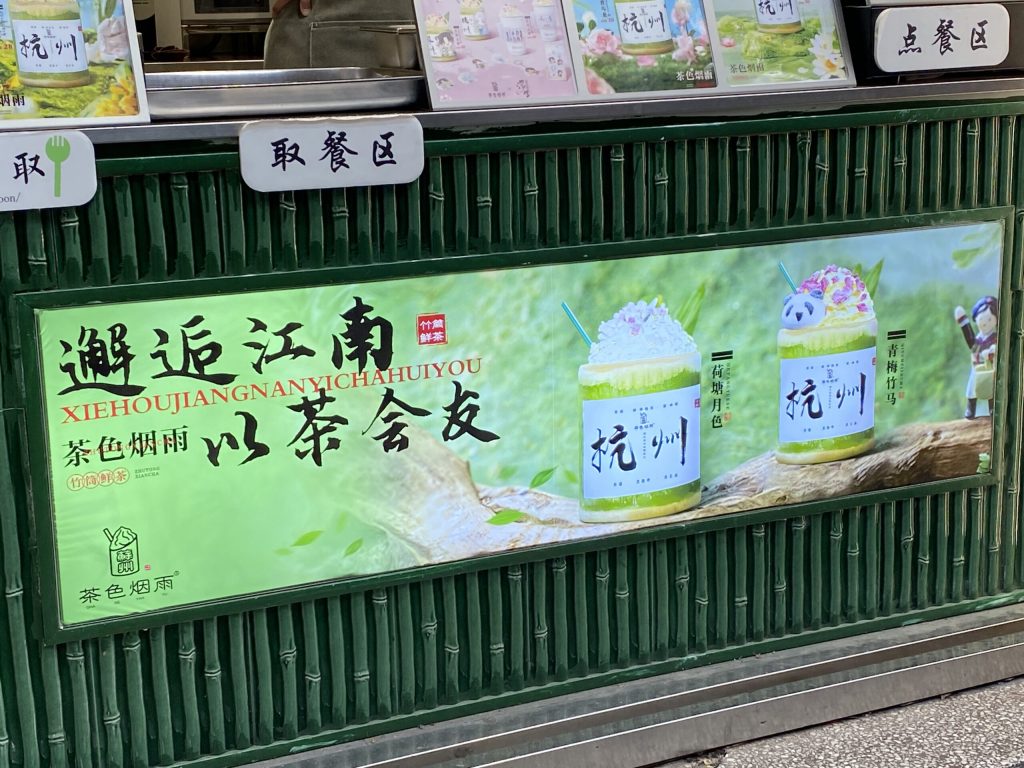Ông-lâi-so͘ and Naichā are the Chinese names for Taiwan’s Pineapple cake and Bubble Tea.
📍The Taiwanese pineapple cake is called 鳳梨酥 in Chinese Pinyin; 鳳梨 means pineapple and 酥 pastry.
In Taiwanese Hokkien these sweets are known as ông-lâi-so͘ (王梨酥).
Both names mean “pineapple”, and so, or sū, means “crispy”.
These two Chinese words phonetically resemble 旺來, which means “fortune comes”.
The Taiwanese 王梨 (ông-lâi) sounds quite similar to 旺來 (ōng-lâi), which is a phrase that roughly means “come forth, prosperous and flourishing”
As a result, this sweet is extremely popular during the Chinese New Year because of its phonetic closeness to the auspicious greeting 旺來.
The Taiwanese pineapple cake is traditionally a square or rectangular pastry made from a shortcrust cookie with a sweetened pineapple filling.
They can also be found in the form of small pineapples, and even cartoon-like animals, depending on which is associated with the coming year.
The SunnyHills cake is better than most others because it really uses pineapple, unlike many Taiwanese brands that ‘cut’ it with large amounts of cheaper winter melon.
HERE are some suggestions for the best brands and the best places to enjoy Pineapple cakes in Taiwan.
📍The Bubble Tea is a tea-based beverage originating from Taiwan, also known by other names: naichā, milk tea, pearl tea, tapioca drink, boba tea, and many others.
It seems to be the result of an oversight by Mrs. Lin Hsiu Hu, owner of a Tea Shop, who in the 1980s accidentally poured fen yuan (tapioca pearls) into her cold tea during a meeting, thus discovering bubble tea.
The original recipe includes: cold or hot tea with fresh or condensed milk and/or cream, flavorings, and sweeteners (honey or sugar or sugar syrup); then add some tapioca pearls, ice in the cold version and food extracts (sometimes even fruit jelly) often flavored with coconut, mango, or coffee.
The beverage exists in different variants; the most common are black or green tea with milk and tapioca pearls.
There are also versions with olong and white tea, with black tapioca pearls, for added sweetness.
The preparation is mixed in a shaker and poured into the typical cup with semi-spherical lid and straw, although in Taiwan it is served in a cup simply covered with cellophane and then punctured to insert the straw.

- Difficulty: Medium
- Cost: Economical
- Rest time: 2 Hours
- Preparation time: 10 Minutes
- Portions: 3 pieces
- Cooking methods: Oven
- Cuisine: Chinese
- Seasonality: All seasons
Ingredients for Pineapple cake and Bubble tea:
For Pineapple cake:
- 1 pineapple
- 2 oz sugar
- 1/2 lemon
- 1 oz sugar
- 3/4 cup flour
- 2 tbsp cornstarch
- 1/2 cup butter
- 1 egg yolk
- 1 pinch salt
- 1 tbsp milk
- 1 bag tea
- 2 tbsp milk (fresh or condensed and/or cream)
- to taste sugar (honey or syrup)
- to taste tapioca pearls
- to taste fruit jelly
Tools
- 3 Molds
Steps for Pineapple cake and Bubble tea:
Blend the pineapple and add it to a saucepan, over the heat, to evaporate the water.
Then add 1 oz of sugar, the juice of 1/2 lemon, and 1 tbsp of butter.
Cook for 10 minutes, then let it cool and refrigerate for 1 hour.
Prepare the shortcrust pastry: mix 1 oz of sugar, with 1/2 cup of butter, and the beaten egg yolk.
Mix the flour with the cornstarch, milk, and salt.
Combine the two mixtures and work the dough.
Form a ball and refrigerate for 2 hours.
Take the dough and divide it into 6 parts.
Cover the molds (usually square or rectangular – you can also use muffin molds) with the shortcrust base, fill them with pineapple, then close with the shortcrust.
Bake at 340°F (170°C) for 20 minutes.

Prepare the tea.
Rehydrate the tapioca pearls in boiling water for a few minutes.
Prepare the bubble tea: base tapioca pearls, add tea, milk, sweetener (honey, syrup, or sugar), and fruit jelly. Mix.
Serve with ice if you prefer it cold.

This is the milk Bubble tea from Hangzhou, China:

Pineapple in Taiwan:
In Taiwan, pineapple represents luxury and hospitality and is a famous feng shui symbol of wealth, fortune, and prosperity.
Sometimes those who have just bought a house roll a pineapple inside their home to bring good luck and luxury.
Pineapple cakes are often given to newlyweds, hoping they will have many healthy children.
In addition to being an ideal symbolic gift to give and enjoy during the Lunar New Year celebrations.
Once reserved for special occasions, Taiwanese pineapple cakes are now readily available year-round and symbolize Taiwan’s economic growth.
During the period of dependency on Japan (1895-1945), pineapple contributed significantly to Taiwan’s economy, and under Japanese rule, many different cultivars were introduced to the country from abroad.
By the 1930s, the country had become the third-largest exporter of pineapples in the world and, by the early 1970s, more than four million cases of canned pineapple were exported each year.
Unfortunately, due to rising costs coupled with competition from Southeast Asia, Taiwan’s exports subsequently proved unsustainable.
From every crisis comes the opportunity to be reborn. Taiwanese pastry chefs thus began selling pineapple cakes.

